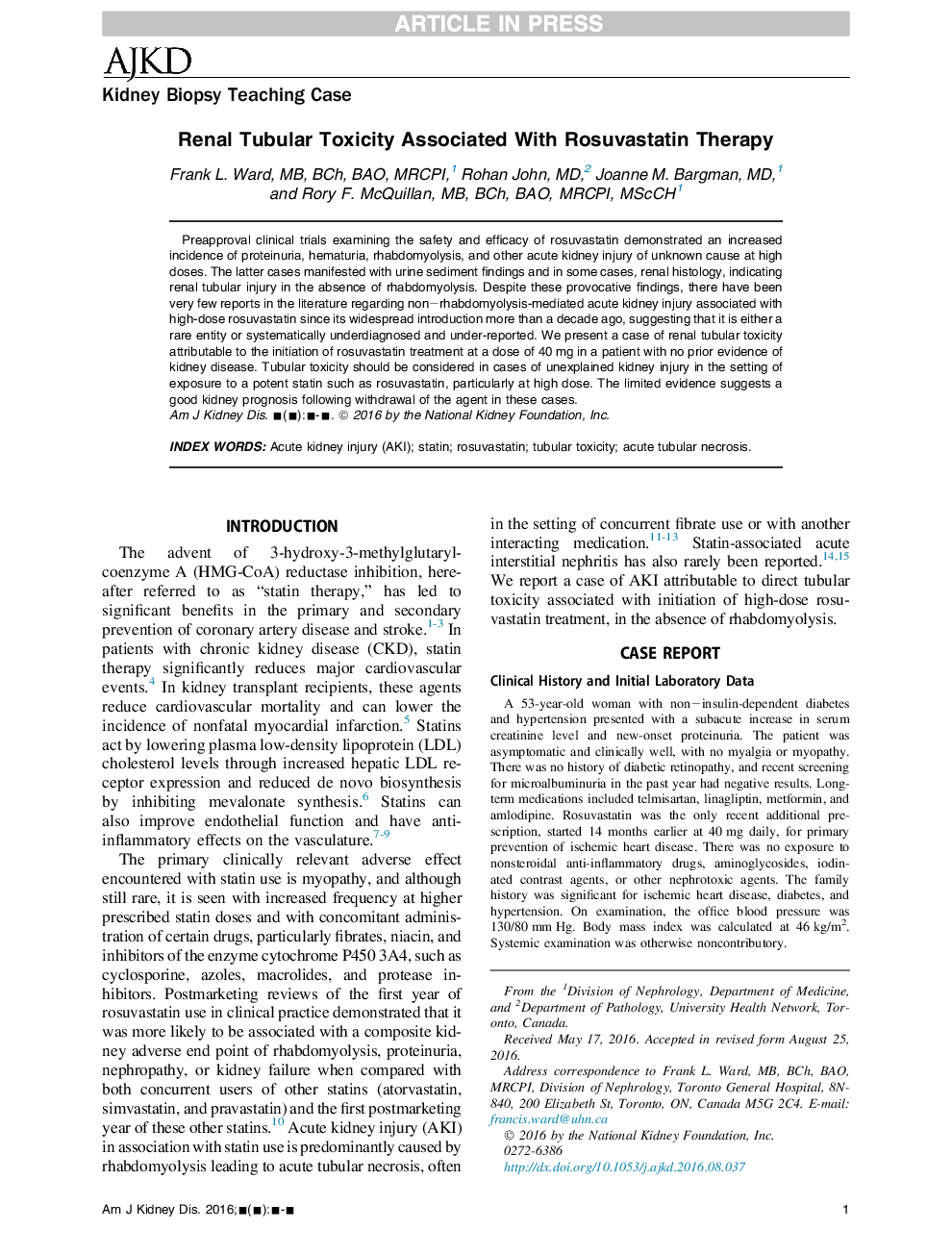| Article ID | Journal | Published Year | Pages | File Type |
|---|---|---|---|---|
| 5685302 | American Journal of Kidney Diseases | 2017 | 4 Pages |
Abstract
Preapproval clinical trials examining the safety and efficacy of rosuvastatin demonstrated an increased incidence of proteinuria, hematuria, rhabdomyolysis, and other acute kidney injury of unknown cause at high doses. The latter cases manifested with urine sediment findings and in some cases, renal histology, indicating renal tubular injury in the absence of rhabdomyolysis. Despite these provocative findings, there have been very few reports in the literature regarding nonârhabdomyolysis-mediated acute kidney injury associated with high-dose rosuvastatin since its widespread introduction more than a decade ago, suggesting that it is either a rare entity or systematically underdiagnosed and under-reported. We present a case of renal tubular toxicity attributable to the initiation of rosuvastatin treatment at a dose of 40Â mg in a patient with no prior evidence of kidney disease. Tubular toxicity should be considered in cases of unexplained kidney injury in the setting of exposure to a potent statin such as rosuvastatin, particularly at high dose. The limited evidence suggests a good kidney prognosis following withdrawal of the agent in these cases.
Related Topics
Health Sciences
Medicine and Dentistry
Nephrology
Authors
Frank L. MB, BCh, BAO, MRCPI, Rohan MD, Joanne M. MD, Rory F. MB, BCh, BAO, MRCPI, MScCH,
